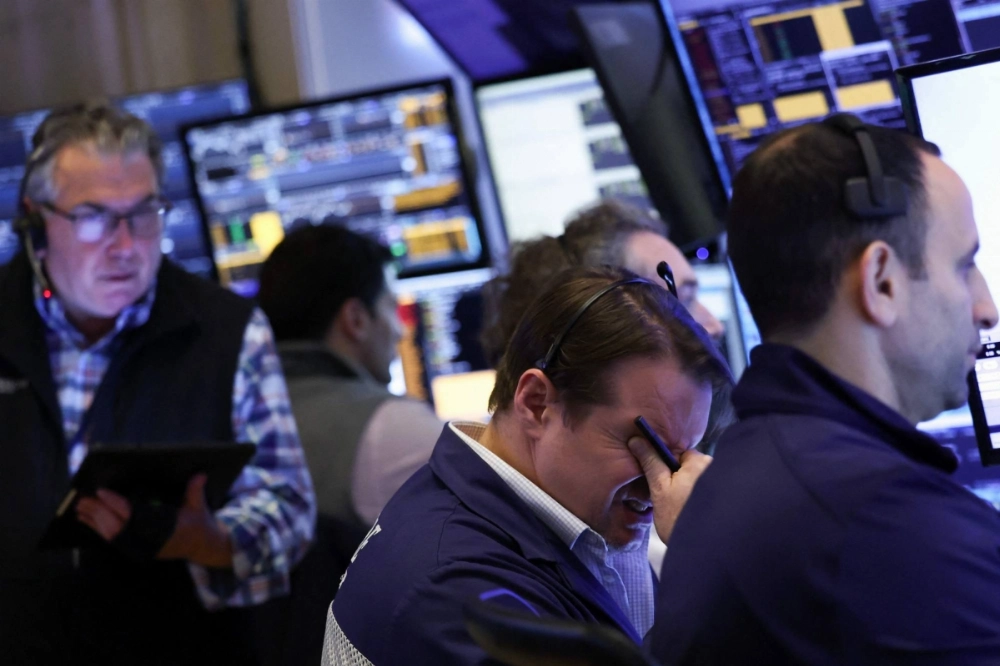U.S. stocks plunged by the most since the depths of the pandemic, erasing $2.5 trillion in value as President Donald Trump’s drastic new trade tariffs ignited widespread recession fears and left investors seeking out safe-haven bonds as well as the yen.
The S&P 500 Index sank 4.8% — its biggest drop since June 2020 — to enter a technical correction again following a brutal global rout in markets from Tokyo to London. The Nasdaq 100 Index shed 5.4% — its worst day since September 2022 — driven by Apple’s 9% loss, while Nvidia and Tesla both plunged. Everything from sneaker makers to apparel plunged after Trump rolled out new tariffs on crucial manufacturing countries including Vietnam and Indonesia. Nike slid 14%. Lululemon Athletica, Abercrombie & Fitch and Gap also declined.
Trump on Wednesday imposed the steepest American tariffs in a century, saying he will apply a 10% tariff on all exports to the U.S., with even higher duties on some 60 nations, to counter large trade imbalances with the U.S.. Some of the worst hit stocks were the riskiest corners of the market — shares of small companies — sending a warning signal for investors. The Russell 2000 Index dropped 6.6% into what’s called a technical bear market after losing more than 20% compared with its record in late 2021.

















With your current subscription plan you can comment on stories. However, before writing your first comment, please create a display name in the Profile section of your subscriber account page.